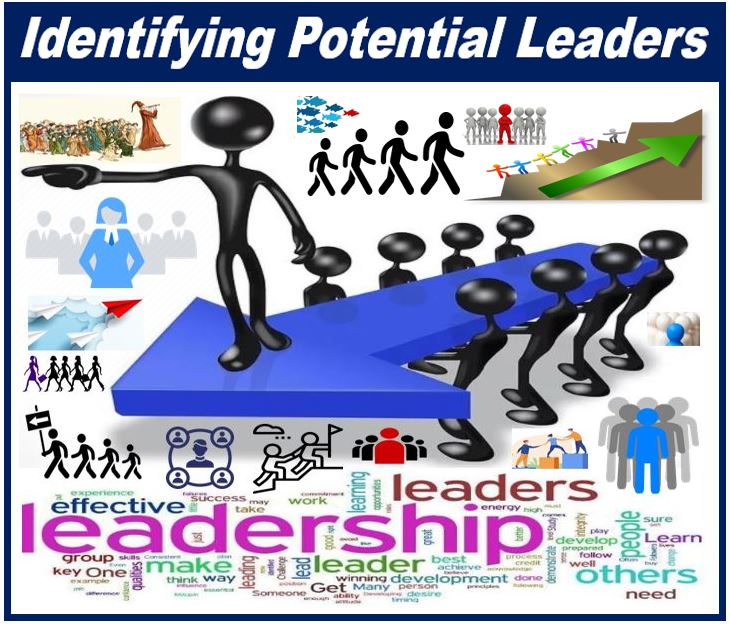Many are familiar with the phrase, “It takes a village,” when raising children. The same is often said when developing future leaders for an organization because most managers are made, not born. Everyone from HR to managers to peers to mentors plays a role in developing an employee’s leadership skills that make them a good fit for a management position.
But before you can grow that new manager, you need to find them first. You need to know what you’re looking for when it comes to leadership skills. Second, you need to find those employees who have potential and develop ideal management skills through various methods such as training courses, mentorship and professional growth resources.

Know What You’re Looking For
Every organization has different values and their own unique company culture. This means that certain leadership styles will excel at your organization, while others may fall flat. Before you start developing future leaders, take a moment to assess what leadership skills and qualities will work within in your organization.
Nurturing an employee for a manager position, without providing them with the skill set to succeed is a wasteful endeavor. In today’s ever-changing world, leadership comes in many shapes and sizes. Some believe leaders must be enthusiastic, innovative, pace-setting and transformational. Others believe an effective leader offers a variety of opinions, ideas and solutions.
Aligning company culture and values is another factor when identifying and developing future leaders. As is the case at many organizations, as a company evolves, top leadership turns over and new generations take their place. Shifting or adjusting company values is an unanticipated benefit from the change in leadership, especially when that cultural shift happens through a movement versus a top-down mandate. After all, most organizations want to adapt and evolve to cultural shifts.
Identifying Potential Leaders
Identifying who will make a good future leader is easier said than done. It truly is a team effort to find those people. Both HR and managers need to work together to identify who may be a good fit through various modes. Here are a few recommendations.
-
Performance reviews
Any individual contributors that regularly receive high praise, year after year, from multiple colleagues, cross-functionally? Make sure a section exists in which managers can mark whether they recommend an employee for a management position?
-
Regular praise
Are there employees who continually receive praise in your organization’s recognition system? More specifically, are they recognized for qualities you want to see in your leaders, like stepping up for a project, going the extra mile, extraordinary problem-solving capabilities, etc.
-
Surveys
Does your organization regularly execute surveys for managers and employees to identify those interested in a management role or as an opportunity for managers to recommend a potential candidate? Providing employees the opportunity to evaluate themselves and even indicate interest in moving to a leadership role within an organization helps ease the search.
Consider automating many of these recommendations using a data-driven communications platform to identify other skills an employee may not recognize as a strength and make sure those skills get nurtured and developed.
To further support employee development, a platform that sends timely, relevant follow-ups to team members about their performance reviews and tracks goals increases employee engagement and leads to improved productivity. And, because personalized rewards and recognition enhance performance and make employees feel valued, the same platform can distribute smart awards for employees completing a task.
Developing the Right Skills
Once potential leaders are identified, managers need to continue helping those people develop the right skills, even after they’ve been moved into a management role. Be sure that their manager communicates with them regularly about their growth and progress, and shares different professional resources such as articles, webinars and conferences. There’s always room for more improvement, so consider leadership training for mid level managers in addition to these other resources.
Consider taking advantage of a mentorship program where selected employees can learn from other leaders in their chosen field, gain support and expand their network.
And finally, replace sweat with software. Harness the power of a data-driven communications platform that uses data points to send personalized messages to employees, sharing development programs, virtual workshops, learning management system (LMS) courses and cross-departmental training programs.
The platform can determine if an employee has participated and engaged with these resources or needs additional support, mentoring and coaching.
Are you ready to identify the next generation of leaders for your organization? Download this Employee Growth and Leadership toolkit.
About the Author
John McDonnell is Chief Operating Officer + Chief Financial Officer at Evive. He has a successful track record helping businesses grow and scale. According to Evive: “He’s a hands-on leader with a clear understanding of business economics and key value drivers.”
Interesting related article: “What is Motivation?“
